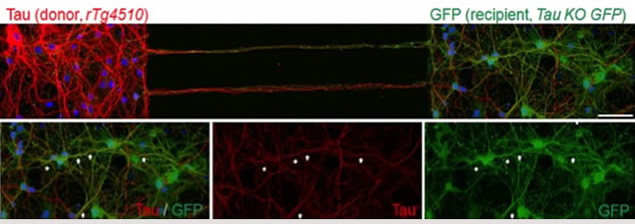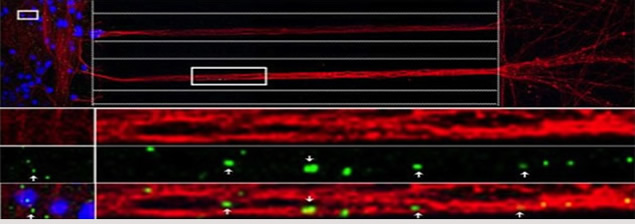Columbia University
Irving Medical Center
Neurological Institute
710 West 168th Street, 3rd floor
(212) 305-1818
Featured Research
IN THE LAB: Karen Duff, PhD
 Karen Duff, PhD
Karen Duff, PhD
Over the last 20 years, my lab has genetically engineered various mouse models for the study of Alzheimer's disease (AD), Frontal Temporal Lobe Degeneration linked to tauopathy (FTD-tau), and Parkinson's disease (PD), in order to gain insight into the molecular mechanisms underlying these different neurodegenerative disorders. These models have facilitated the study of many aspects of the disease process, from why certain cells are vulnerable to disease and how disease spreads through the brain, to imaging studies allowing the examination of structural and functional changes in the brains of living animals. Overall, our aim is to understand what causes these diseases and what therapeutic approaches may be beneficial for treatment or prevention. Our models are also used to identify particular pathways that might respond to therapeutic intervention, as well as the testing of currently available drugs. Increasingly, we are moving toward the identification and development of novel drugs that impact the pathways we have identified as relevant, along with colleagues at CUMC.
At present, our current interests are fourfold- 1) how neurodegenerative diseases spread ("propagate") through the brain and how that spread can be stopped, 2) methods that can be used to "clean up" disease causing proteins from the brain, 3) how a particular disease-associated protein (Apolipoprotein E4) significantly increases the risk of AD, and 4) the basis and manipulation of memory deficits using optogenetic and brain stimulation techniques.

Co-culture of two neuronal populations in microfluidic chamber devices to study the transfer of tau protein from cell-to-cell. Donor: tau, red. Recipient, tau KO GFP, green.
To study how AD pathology and dysfunction spreads through the brain, a project led by Li Liu, we created lines of mice that model the earliest stages of AD, when tau tangles are restricted to regions called the entorhinal cortex (EC) and hippocampus. The most significant findings from the mice, thus far, is that tau can spread through the brain along synaptically connected networks, and the observation that tau molecules can be transmitted from cell to cell. Additionally, our Taub collaborator, Scott Small, has used functional magnetic resonance imaging (fMRI) to show that dysfunction also spreads through brain regions and that Abeta can exacerbate the toxicity of tau.
To explore the molecular mechanisms involved in propagation, the impact on anatomically connected circuits, and the relationship to functional decline determined by functional imaging and cognitive performance, we have turned to sophisticated cell models in a project led by Jessica Wu.

Small, misfolded Tau aggregates (green) are internalized and anterogradely transported in neurons (╬▓-tubulin III, red) grown in microfluidic chambers. Blue, DAPI-stained cell nuclei.
Natura Myeku, in collaboration with Taub colleague Wai-Haung Yu, is focused on understanding the role of misfolded protein removal ("clearance") pathways (mainly autophagy and UPS clearance) in the disease process, and the testing of "druggable" pathways to identify new candidates for drug development.
Tal Nuriel, in collaboration with Taub colleague Gilbert Di Paolo, is using a "multi-omics" approach (transcriptomics, lipidomics, and metabolomics) on human or genetically manipulated mouse brain tissue to identify new pathways impacted by the protein Apoliprotein E (ApoE), which might explain why inheritance of a particular normal variant of ApoE4 increases the risk for AD.
Another project, led by graduate student Caterina Profaci, in collaboration with new Taub Assistant Professor Abid Hussaini, is looking at the neurobiology of memory and learning, and how it becomes dysfunctional in AD and FTD. This project will also look at how increasing neural activity may be used to prevent cognitive decline or even improve memory recall.
All of the projects in my laboratory are supported by the work of Helen Figueroa, Matt Herman, Sheina Emrani, and Li Shi.

